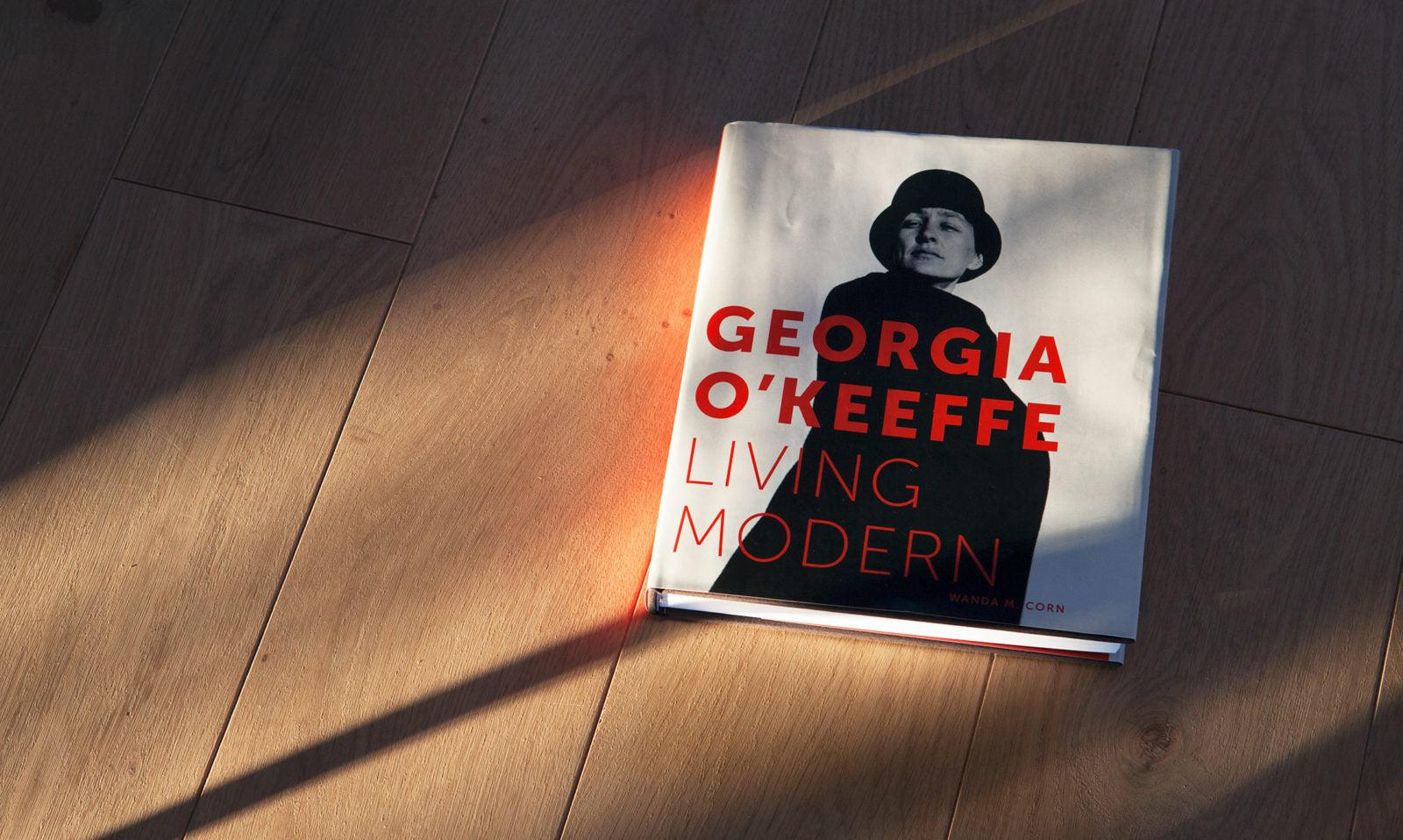I knew she was an accomplished seamstress and it is obvious that she considered her clothes and surroundings with care, but, what a thrill to see it all in one place, and to be able to get close to the clothes and photograph them. Clothes carry an energy of the maker and wearer, and these pieces made my heart sing. The photos here are just a taste of what was shown, and the pieces in the show are a sampling of what you'll find in the show catalog, a 300+ page book that I am devouring and recommend especially if you want more specific information about O'Keefe, her art and the clothes she made and wore. O'Keefe was always aware of current fashion, adapting it, simplifying and minimizing and paring it down to fit her own sensibilities and style. Her aesthetic remained constant and cultivated throughout her life with a dedication to simplicity, naturalness and sparseness in her art, her clothes and her home. Visiting her Abiquiu home on a carefully guided tour, we peered from the outside into the living room, where I noticed a bare light bulb that was part of the decor. As we walked through the kitchen there was an obviously re-used container labeled in her own hand, 'good tea'.

The show ran chronologically starting with portraits of her done by her fellow students in art school.

The Checkered Dress
Portrait of O'Keefe by Hilda Belcher, who was a fellow art school student, show that her sense of style started when she was young. The painting is done in watercolor, quite an achievement to get the fabric and scale in that tricky medium, and shows that her love of black and white began early and continued in her wardrobe and art.
This series was made by O'Keefe during the ’20’s and uses machine stitching for a few seams but is virtually sewn by hand. I got as close as I could without touching and it was hard to tell if the tiny pin tucks were sewn by machine or by hand. I wished I’d taken my friend Francesa’s advise and brought binoculars! All in ivory silk, which has probably aged and yellowed with time. She used techniques we refer to today as 'French Heirloom Sewing', but was commonly used when she would have learned to sew as a child growing up on a farm in Wisconsin. The fact that she kept these garments shows how much they meant to her.
Notice the skirt on this dress which is a double layer, the hem is a fold and the layers are sewn by hand. the edges of the tie are bound with tiny bias binding. The double layer takes care of show-through, it acts as a lining and improves the hang of the silk.


I could not get close enough to this tunic/smock dress to be sure if the pin tucks were done by hand or machine (in fact, by hand, her stitches are miniscule).

The sleeve is masterfully shaped to the arm (she had long arms), and the cuff shaped and detailed to show off her small wrists.
The 3 Blouses
Silk blouse, meticulously machine stitched and topstitched, uses different kinds of pearl buttons alternating down the front. She was frugal and may have recycled the buttons.
Linen blouse entirely hand made with pin tucks and faggoting along the front 'bib' and down the sleeves.

Linen blouse with miniscule hand sewn pin tucks that shape the garment to the body. This must have been a favorite as it was mended on the back (I could not get close enough to see this). The front neck detail bears a similarity to her leaf paintings which were shown in the same room.
Iconic Black Cape
The iconic cape which was originally worn by and a trademark of Alfred Steiglitz, but Georgia O'Keefe adapted this garment for herself. I read in one biography that she sewed matching black capes for each of them, but those have been lost. The same biography told of her early days with Steigletz in New York, where they would spend evenings at home when she sewed by hand, lingerie, nightgowns and clothing, a practical consideration as at this time their finances were tight. In later years O'Keefe had clothes made by dressmakers and purchased ready to wear. She was clearly aware of American fashion trends, was always of her time but in her own style. When she like an outfit or garment she would have it replicated by a dressmaker, and in some cases would take it apart to make a pattern.
This black cape was sewn by Zoe de Salle, an American couturier who lived in New York and was known for her signature monastic capes.
Hand Sewn Coat
Referred to as a coat, possibly/probably made by O'Keefe. The bands of color in the lining are hand painted. She adapted this wrap style all her life.
The Man's Shirt



Denim Work Apron



Dresses
Claire McCardell dress worn with concho belt and Navajo button at the neck. Claire McCardell is credited with being the American designer who created 'sportswear' for modern women as well as the first designer to use denim as a fashion fabric. This dress was an O'Keefe favorite. She told a caregiver that, 'she was the best woman designer we've ever had'.

A favorite Marimekko dress

The Chute Dress


The Wrap Dress


A series of O'Keefe's wrap dresses.

Balenciaga Black Suit

Georgia O'Keefe's Robe, photograph by Bruce Weber
Georgia O'Keefe was photographed by some of the greatest photographers of her time, starting with Steiglitz, including Paul Strand, Ansel Adams, Todd Webb, Philippe Halsman, Yousuf Karsh and Laura Gilpin. I was tickled to read that O'Keefe herself owned a Leica!
There is so much more in the catalog, a wonderful inspiring reference to a modern American icon.





